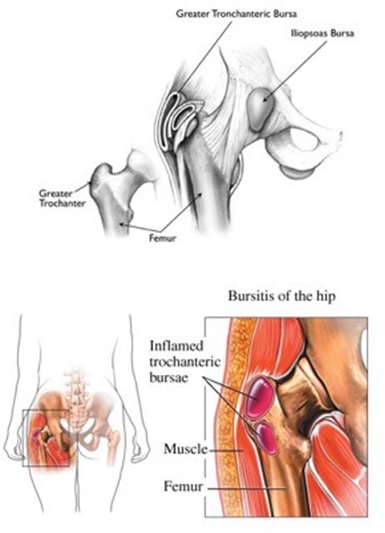Hip bursitis occurs when the bursa in the hip becomes irritated and inflamed. Bursae are small jelly- like sacs filled with fluid, that are positioned between bones and soft tissues, acting as cushions to help reduce friction with movement. There are two major bursae in the hip that typically become irritated and inflamed. One bursa covers the bony point of the hip bone called the greater trochanter. Inflammation of this bursa is called trochanteric bursitis. Another bursa, the iliopsoas bursa, is located on the inside (groin side) of the hip. When this bursa becomes inflamed, the condition is also sometimes referred to as hip bursitis, although the pain is located in the groin area. The latter condition is not as common but is treated in a similar manner. The main symptom of trochanteric bursitis is pain at the point of the hip. The pain usually extends to the outside of the thigh area. In the early stages, the pain is usually described as sharp and intense. Later, the pain may become more of an ache and spread across a larger area of the hip. Typically, the pain is worse at night, when lying on the affected hip, and when getting up from a chair after being seated for a while. It also may get worse with prolonged walking, stair climbing, or squatting. Common risk factors associated with hip bursitis include receptive stress/overuse, hip injury, spine disease, leg length inequality, rheumatoid arthritis, previous surgery, bone spurs or calcium deposits.
